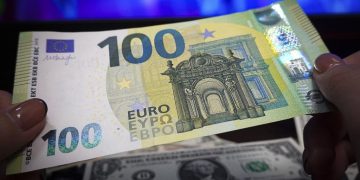Introduction
In May 2024, TikTok videos spotlighting China’s electric vehicle (EV) makers—BYD, NIO, Xpeng—went viral, sparking a 30% rally in small and mid-cap Chinese EV stocks. Meanwhile in the US, auto loan delinquency rates jumped 12%, marking the sharpest increase since 2010. This divergence poses a core puzzle: why were retail investors pouring into China’s EV growth narrative while American consumers struggled under tightening auto credit? The clash between social-media-fueled enthusiasm and warning signs in consumer finance highlights an unwinding of traditional market synchronicity—pointing to broader implications for global auto supply chains, lending markets, and strategic investing.
Key Data & Background
TikTok engagement metrics in May revealed a staggering 45% increase in views on Chinese EV content, with hashtags like #NIO, #BYD, and #XPeng trending across global feeds. Retail trading volumes for these stocks soared, especially on platforms catering to international investors, fueling price gains of around 25–35%. Company earnings backed the narrative: BYD reported a 42% year-over-year sales increase in Q1 2024, powered by robust demand in Europe. Xpeng and NIO also showed strong revenue growth, reinforcing investor sentiment.
In stark contrast, US credit data painted a grimmer picture. The Federal Reserve’s Quarterly Report on Household Debt and Credit showed a 12% rise in auto loan defaults in Q2 2024—driven by subprime segments. Average monthly payments climbed nearly $50, while loan terms stretched from 66 to 72 months. These conditions paired with inflationary pressure and rising rates created a squeeze for American consumers. Graphing month-over-month TikTok EV engagement against US auto delinquency yields a striking visual: enthusiasm rises even as financial stress mounts—an unsettling decoupling.
Cross-Market Impact
The Chinese EV stock surge triggered a wave of supply-chain implications. First, demand for EV components—batteries, electronics, chassis—jumped. Suppliers in China ramped up orders, but international players like Magna and Lear faced downward pressure as global auto orders dipped. European and US auto-parts manufacturers saw export growth slow amidst shifting orders, cutting back forecasts by 5%.
Meanwhile, the US auto loan crisis fed back into vehicle sales. Potential buyers postponed purchases, straining dealers and manufacturers like GM, Ford, and Stellantis. Inventory turned stagnant; heavy incentives have failed to move vehicles in several segments. Borrowers defaulted as monthly payments became unmanageable—an echo of 2008 conditions but with a twist: now driven by credit-cautious households rather than big lenders. This weakening demand contrasted with vigor in China’s EV market—complicating global strategy for automakers and suppliers.

The scenario mirrors 2013’s “taper tantrum,” when a shift in US monetary policy decoupled domestic bond markets from emerging-market growth. Here, social-media-driven confidence around Chinese EVs contrasts sharply with domestic credit contraction—revealing how behavioral factors and financing conditions can diverge across geographies.
Expert Viewpoints
China International Capital Corporation (CICC), a prominent research firm, suggests TikTok’s attention reflects genuine improvement in EV fundamentals. Their June 2024 analysis states, “Retail interest is underpinned by strong delivery numbers, expanding market share, and new launch pipelines.” They argue that positive sentiment amplifies existing tailwinds, reinforcing the rally.
On the other hand, US credit analysts stress a looming undercurrent of risk. A mid-2024 report by Fitch Ratings flagged that rising auto delinquencies often precede broader consumer credit stress, echoing the recession warning ahead of the 2008 crisis. They caution that vehicle affordability breakdowns may spill over into credit card and mortgage portfolios.
Institutional investors remain torn. Goldman Sachs highlights the strength of China’s EV franchise and predicts expansion into Latin America and Europe as supply constraints ease. Conversely, Morgan Stanley focuses on US credit metrics, warning of “hidden systemic vulnerabilities” that could depress not only domestic auto but broader consumer spending.
Adding contrarian depth, Nobel Prize–winner economist Angus Deaton suggests behavioral feedback loops could distort rational price discovery: “Retail-driven rallies often detach from economic fundamentals—China’s EV run may reflect generational preferences more than value, while US credit stress shows sober reality.”
Future Outlook & Strategy
Looking toward 2025, three scenarios could unfold. In a bullish scenario, China’s EV sector sustains growth—supported by new models and export expansion—while US credit conditions stabilize following rate pauses. EV suppliers benefit globally, and automaker strategies realign to leverage decoupled regional strengths.
In a conservative scenario, protracted credit stress suppresses US auto sales, dragging down supplier earnings. Chinese EV adoption remains solid but faces new competition and margins compress, leading to slower overall growth. Global parts companies face balancing acts to manage regional exposures.
Perhaps most likely is a mixed outcome, with retail exuberance in China moderated by macroeconomic needs and US credit pressures easing post-2025 rate plateau. Investors should watch trends in Consumer Financial Protection Bureau auto data, Chinese export registration volumes, and TikTok retail sentiment.
Tactically, investors should diversify geographically—exposing portfolios to both Chinese EV stocks and resilient US suppliers. Monitor auto loan delinquency rates and household debt-to-income ratios, cross-referenced with social-data sentiment. For corporate strategy, automakers and suppliers must build supply chains that can pivot between market dynamics or tolerate imbalances via flexible production systems.
Conclusion
The distance between China’s booming TikTok-fueled EV rally and America’s rising auto credit stress reflects a fracture in global automotive fundamentals. While social buzz feeds growth narratives, it masks monetary friction beneath. Investors and corporations alike must learn to read both digital signals and financial health indicators to manage cross-regional risks. Will China’s EV momentum weather the tide of global credit reevaluation—and can US consumers regain balance before disrupting their auto market? That question may define the next phase of global mobility.

































